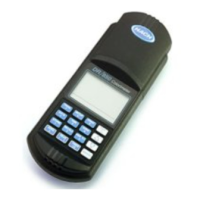345
Highly buffered samples or extreme sample pH may exceed the
buffering capacity of the reagents and require sample
pretreatment; see pH Interferences in Section 1.
Phosphites and organophosphorus compounds other than
phosphonates react quantitatively. Meta and polyphosphates do
not interfere.
Summary of Method
This method is directly applicable to boiler and cooling tower
samples. The procedure is based on a UV catalyzed oxidation of
phosphonate to orthophosphate. Range may be as low as 0 to 2.5
mg/L or as high
as 0 to 125 mg/L.
Phosphonate is converted to orthophosphate during the UV
digestion. Both the sample and the blank will develop color if
orthophosphate is present in the sample. The increase in color in
the sample is proportional to the phosphate produced in the
digestion.
Interfering Substance Level Interfering Substance Level
Aluminum 100 mg/L EDTA 100 mg/L
Arsenate all levels Iron 200 mg/L
Benzotriazole 10 mg/L Nitrate 200 mg/L
Bicarbonate 1000 mg/L NTA 250 mg/L
Bromide 100 mg/L Orthophosphate 15 mg/L
Calcium 5000 mg/L Silica 500 mg/L
CDTA 100 mg/L Silicate 100 mg/L
Chloride 5000 mg/L Sulfate 2000 mg/L
Chromate 100 mg/L Sulfide All levels
Copper 100 mg/L Sulfite 100 mg/L
Cyanide
1
100 mg/L Thiourea 10 mg/L
Diethanoldithiocarbamate 50 mg/L
1
Increase the UV digestion to 30 minutes.
PHOSPHONATES, continued

